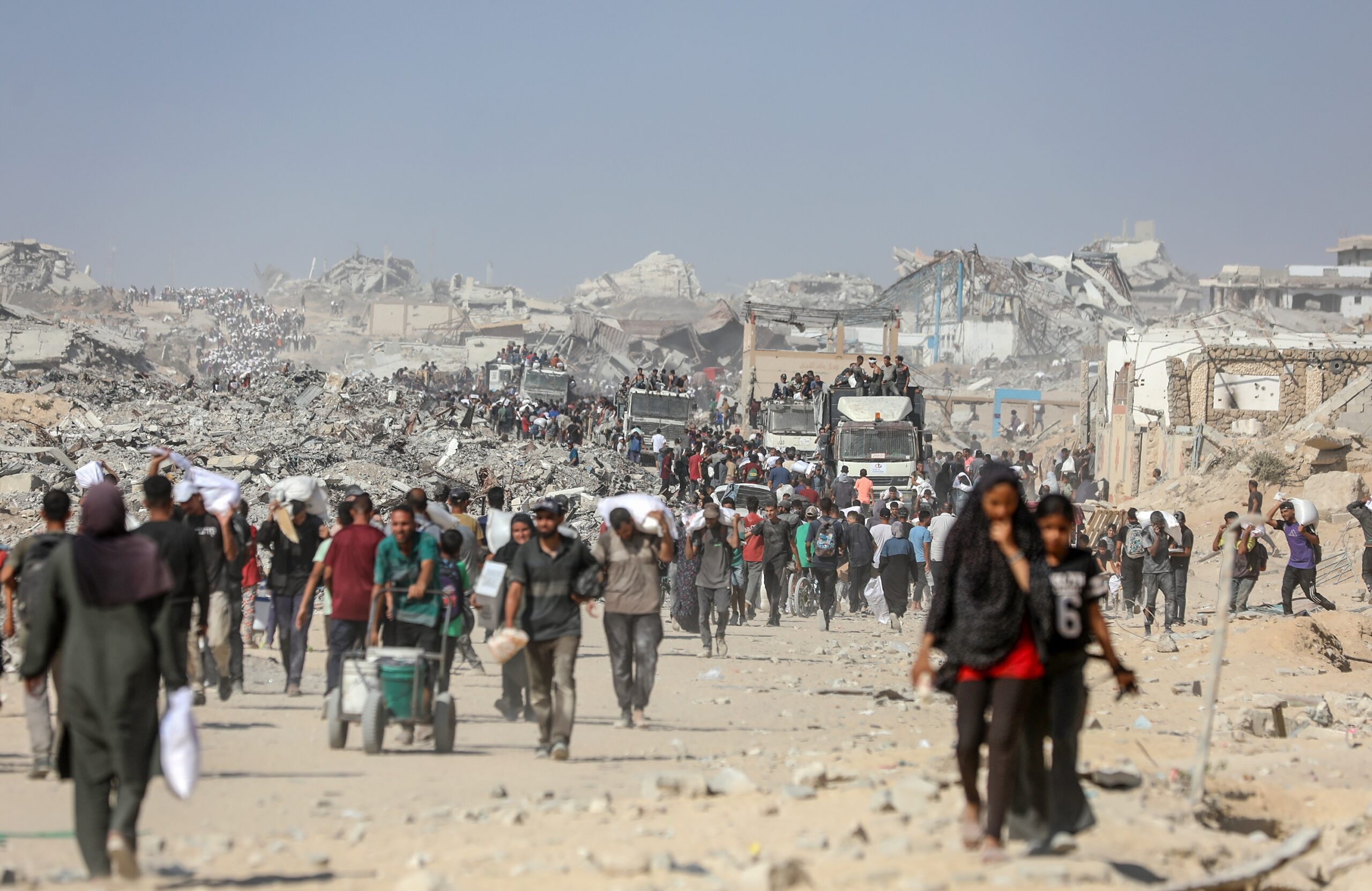The default position in Vietnam’s political system is always stability and a balance between competing factions. Will the “grand compromise” at the recent national party congress pay off?
Since political reunification in 1976, under the name the Socialist Republic of Vietnam, the Vietnam Communist Party has convened ten National Congresses at five-yearly intervals. Party congresses are numbered consecutively from the Party’s founding in 1930. The fourth National Congress was held in 1976 and the most recent, the thirteenth, was held from 25 January to 1 February 2021.
The National Congress represents the highest level of decision-making in Vietnam. It has five main functions: to approve the Political Report by the Party secretary general reviewing successes and shortcomings over the past five years, to approve multi-year socio-economic development plans, to revise the Party’s platform, to amend the Party’s Statutes, and to elect new leadership.
Structure of Party Leadership
Vietnam’s top leadership comprises four distinct bodies: the Central Committee, the Political Bureau (or Politburo), the Secretariat, and the Inspection Committee. The Central Committee, or more formally, the Central Executive Committee, is the Party’s highest decision-making body between National Congresses. Party statutes require that the Central Committee meet at least twice a year.
Once a National Congress elects a new Central Committee, it holds its first plenum on the last day of the congress to elect the Political Bureau and the Party’s leader, the secretary general. The Congress also elects the Secretariat, the Party’s administrative officers, and the Inspection Committee, the Party’s disciplinary watchdog.
Generational Change
The Vietnam Communist Party meticulously plans for generational change by setting formal rules and informal norms in the selection of its leaders. For example, Party rules set a mandatory retirement age of 65 for members holding official positions. In addition, no Party official can serve more than two full terms in the same office. However, the rules provide for exemptions in exceptional cases. In 2016, at the twelfth Congress, for example, the incumbent secretary general (as well as a small number of Central Committee members) was given an exemption from the 65-year age limit so he could serve a second term.
Party rules also set out guidance on the age and gender structure of candidates for election to the Central Committee and Political Bureau. For example, at the thirteenth Congress, the following age quotas were applied for prospective members of the Central Committee: under 50 (10-20 percent), 50-60 (70 percent), and 61 and over (10 percent). In order to qualify for selection to the Politburo, a prospective candidate must have served one full five-year term on the Central Committee.
Vietnam’s top four leadership posts – secretary general, state president, prime minister, and chair of the National Assembly – must be filled by persons who have completed one full five-year term on the Politburo. These four positions are known informally as the “four pillars.”
In 2018, State President Tran Dai Quang, died in office. Filling this vacancy required a major reshuffle of leadership positions, and there was no obvious successor. The Central Committee resolved this conundrum by unanimously allowing Party Secretary General Nguyen Phu Trong to become state president concurrently with his prior position.
Party Leadership on the Eve of the Thirteenth Congress
In 2016, the twelfth National Party Congress elected nineteen members to the Politburo. By late 2020, this number had been reduced by five due to the death of the president, ill health, disciplinary action, and the expulsion of two other members from the Politburo.
Seven members of the Politburo were over the age of 65 and were slated for retirement, including the secretary general-president, prime minister, and chair of the National Assembly. Additionally, the secretary general, who suffered a stroke in 2019, was completing his second and supposedly final term in office.
As the thirteenth Congress approached, there were only six incumbent members of the Politburo who were qualified by age and length of service to stand as candidates for one of the four pillars.
Party Wing versus Government Wing
One of the duties of the Party secretary general is to groom a successor. Trong, whose flagship policy was a rigorous national anti-corruption campaign, promoted his protégé, Tran Quoc Vuong, the head of the Central Committee’s Organisation Committee. Vuong was over 65 and therefore would have needed a special exemption to stand for the party leadership.
In December 2020, the Central Committee held its fourteenth plenum and conducted a straw poll of potential candidates for election to the Politburo and other top leadership positions. A majority of the Central Committee pushed back against Vuong, and his name was dropped from the list, thus ending his chances of becoming Party leader.
This impasse set off intense lobbying by two wings of the Party. The Party wing was composed of officials whose careers and present positions were in the Party apparatus. The government wing was composed of officials whose careers and present positions were in the state bureaucracy. They reportedly backed Prime Minister Phuc.
The Party wing stressed the importance of ideology in legitimising one-party rule and constantly warned of the plot of peaceful evolution by opposition and foreign forces that sought to change Vietnam’s socialist regime. The government wing favoured integrating Vietnam with the global economy as a means of legitimising Vietnam’s one-party state.
Exceptional and Unprecedented
Secretary General Trong engineered a come-back by mustering support for a second exemption from the retirement age and his unprecedented retention for a third term as party leader. This set the stage for a “grand compromise” between the two wings. The fifteenth plenum of the Central Committee met from 16-17 January and approved granting age exemptions to Trong and Phuc.
A balance between the two wings was engineered when consensus was reached to nominate Pham Minh Chinh, from the Party wing, as candidate for prime minister and Vuong Dinh Hue, from the government wing, as candidate for chair of the National Assembly. This is a surprising development as the prevailing norm was that the senior deputy prime minister with responsibility for the economy – Hue in this case –replace a retiring prime minister. Chinh, on the other hand, lacks experience in the government bureaucracy.
Continued Political Stability?
The thirteenth Congress elected a 200-person Central Committee comprised of 180 full or voting members and 20 alternate or non-voting members. Of the 180 full members, 120 were incumbents who had already served a full term or more on the Central Committee. Their experience working at the core of Vietnam’s political system brought a considerable measure of continuity at a time of leadership change.
The thirteenth Congress also adopted a special resolution permitting Secretary General Trong an unprecedented third term in office while retaining party rules limiting future officials to two terms. These two developments should contribute to continuity and stability in Vietnam’s political system because present members of the Politburo who perform well can expect the prospect for promotion to one of the four pillars at the next national party congress.
However, there are two possible clouds on the horizon. In a surprising development, the new Central Committee elected only eighteen members to the Political Bureau, one below the target of nineteen from a field of over twenty candidates. Vietnamese insiders call an even number of Politburo members unstable because it could delay decision-making when votes are tied, which in some cases could undermine the authority of the secretary general. The second cloud concerns the future health of Secretary General Trong who will turn 77 in April.
Vietnam’s leadership transition will not be complete for another five months. All members of the Central Committee in line for a ministerial or equivalent post in the Cabinet and government agencies will have to stand for election as deputy to the National Assembly in May and be confirmed by the National Assembly in June.
Carlyle A. Thayer is Emeritus Professor, The University of New South Wales Canberra. He was educated at Brown, Yale, and the Australian National University. Thayer is a Vietnam country specialist with over 500 academic publications and is frequently interviewed by the Vietnamese press and television. He is Director of Thayer Consultancy that provides political analysis of current regional security issues and other research support to selected clients.
This article is published under a Creative Commons License and may be republished with attribution.




